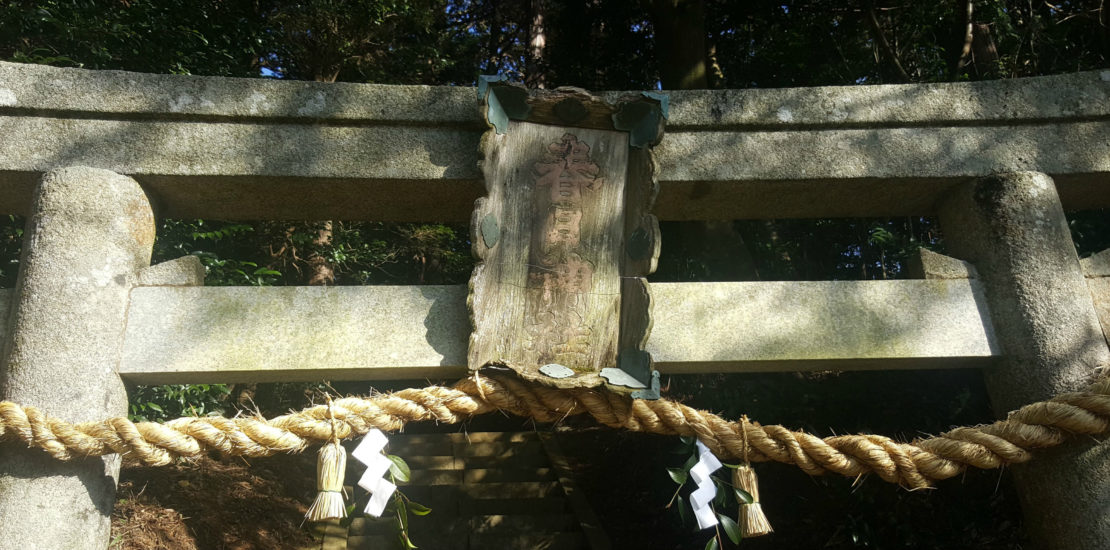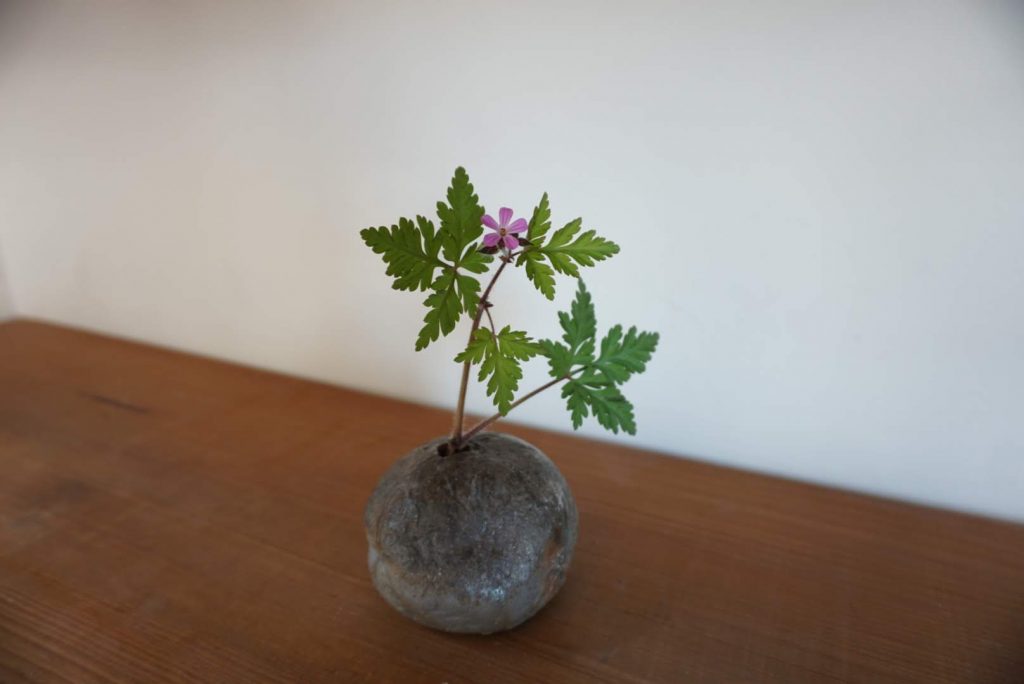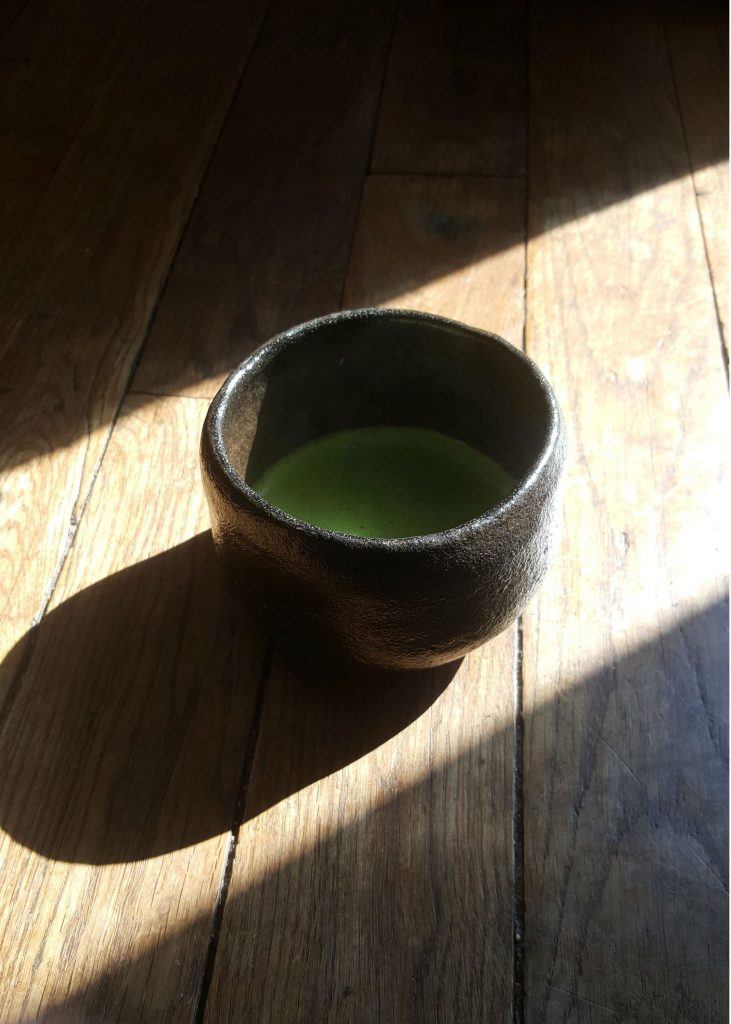
In my practice of the Japanese tea ceremony, many of my guests are intimidated when they enter the tea room. Fueled by the idea that tea ceremony is an austere, martial and spiritual activity, they have a hard time relaxing. Today, I would like to discuss the reasons for this intimidation and reassure my future guests.
The appearance of an austere and martial religion
The Japanese tea ceremony is often seen as strong disciplinary teaching that can be very frustrating. Students have to stay on their knees for hours, gulping knowledge and pride as they get reprimanded on a regular basis. This cliché image of the hard Japanese teacher might encompass a certain reality, and there is certainly something of a martial discipline in the way Tea is taught today. The spiritual weight and the cultural symbol attached to the practice make things worse. From the exterior, the Japanese tea ceremony can be thus perceived as, at best, a Vowed religion centered around tea and, at worst, a horrible fashion of teaching the most protocol way of making an old drink.
That tea was, and maybe is a religion, that is something that « Tea people » (Cha-Jin) do not try to hide. The first major introduction of Tea to the west, the famous Book of Tea by Okakura Kakuzo, assumes that stance and translate Chado, the Way of Tea, by Teaism. In 1905, this clearly positioned tea as an ‘ideology’ like communism or christinanism. And with the religion comes the priests, the popes and the laymen, the initiations and the ascetism. The Way of Tea is very easily confounded with Zen and Zen is not a religion for the soft-skinned. Just think that the Shaolin Monks of China are one of the many Zen sects of the world and, consider their training — you might see what I mean now.
Adding to all this, Tea has become in the late 19th century a powerful tool of cultural education in Japan, thus developing the need for mass-pedagogical tool and lowering the amount of patience that a teacher can have for a student. Austerity and martialism go well together in that case and, even before that period, there has been more than one Tea Master to say that tea is the pinnacle of martial arts. Thus, tea is sometimes considered as an austere and martial religion.
Many of my guests enter the room with fear of being scolded, of not acting properly. Especially in a tea room, it is easy to feel stressed. The history of the Japanese tea ceremony and its practice is, somehow, intimidating. In our daily life, when we meet someone new, breaking the ice is very often made through jokes, but jokes are rarely made in public tea ceremonies.
Long story short: both for the students and for the guests of tea ceremonies, the practice can seem very austere and stressful. Yet, this is all just the outer shell. This is what is required to get the kata, the form of the tea ceremony: to learn the right movements, the right behavior in order to make the event go smoothly.

The appearance and the essence of tea
Certainly, the form is not the heart. But the heart cannot be reached without the form. Knowing the form (which includes the very precise movements to serve and receive tea) is required to access the heart. To put it differently, as the philosopher Hegel would say : the appearance is essential to the essence. The essence, the heart of something, cannot be separated from its appearance. The true essence can only reveal itself through the appearance it takes.
Without getting into shape, the core of the tea ceremony cannot be reached. But is the core to be austere and martial ? I think not. At least not in the practice I have been trained to do. Only : it is by knowing your music sheet that you can allow yourself to improvise. Which music is being played ? What does it truly convey, I would not dare to speak for myself and for the other practitioners of Tea, I lack experience for that.
Unexpected laughter framed in the frame of rules
With all this being said, I recall of a private tea ceremony I experienced in Tokyo. It was held by a member of our school in honor of my tea master. The event was prepared by our host and his wife for probably months. As we entered the two-tatami mat space built by our host, he opened his own entrance door and greeted. With great calm he said that he had been wanting to invite my master for more than 30 years. ‘What a pressure !’ I thought. But then the ceremony started and a true défilé of saké and wines were poured into our cups.
We were casually talking as our guests prepared things in the kitchen and, occasionally, he would come to us, chat a bit of various things, laugh with us and go back. As I write it here, I feel like I am describing a Sunday afternoon at a friend’s house. It was the first time that I had met this man. He had nevertheless memorized things about all the guests, making conversation with us on subjects he knew we liked and joking with us. This afternoon was probably one of the most light-hearted moment of my time in Japan. The reason was : because everybody knew their part. I had learned how to properly behave and thus I could enjoy this moment fully, communicating with the host as though we had known each others for years.
When the moment to serve thick tea came, the saké had worked on us and we were quietly floating with hazy smiles as the most formal experience of the tea gathering was about to start. Silence came down slowly on us and, certain of our part to play, we let ourselves drift in the meditative moment created by our host, surrounded by beautiful items and bathed in a dim light.
Yet, something was slightly off for me: I had one hesitation on parts of my behavior. Thus, part of me was not still. This is how I could miss parts of that beautiful evening. Just one doubt, a missing mark on the appearance I should take to fuse myself with the essence of this moment.

Beyond the intimidation
I will now repeat what I said : the Japanese tea ceremony is often seen as a strong disciplinary teaching that can be very frustrating. With my account of this tea ceremony in Tokyo, I hope that I have achieved to express that this is a misconception. I do not know for sure what is the essence of this art, but I know for sure that what we are taught is not meant to be frustrating, it is meant to help us behave properly in any situation so there is no doubt that we properly participate to the moment. The Japanese tea ceremony teaches how to be in harmony between host and guest. The strong discipline, maybe, is just a reply to the growing individualization of our societies where it is more important to stand out than to be in tune with others.
I still remember the ceremony in Tokyo as one of the most amazing moments of my life. And it all happened in a tiny little hut in a small garden of central Tokyo, and I did nothing important there, just enjoyed a meal and some tea with some people. It was neither martial nor austere, simply warm and welcoming. All my years of training, though unfinished, had not been in vain.
Thank you for reading this week’s blog!
If you want to be our blogger and share your Japan life, send us an email to [email protected]
If you are having trouble finding a place in Tokyo, please feel free to contact us and have a look at our properties at tokyoroomfinder.com. We will connect you with your desired house at no cost!



